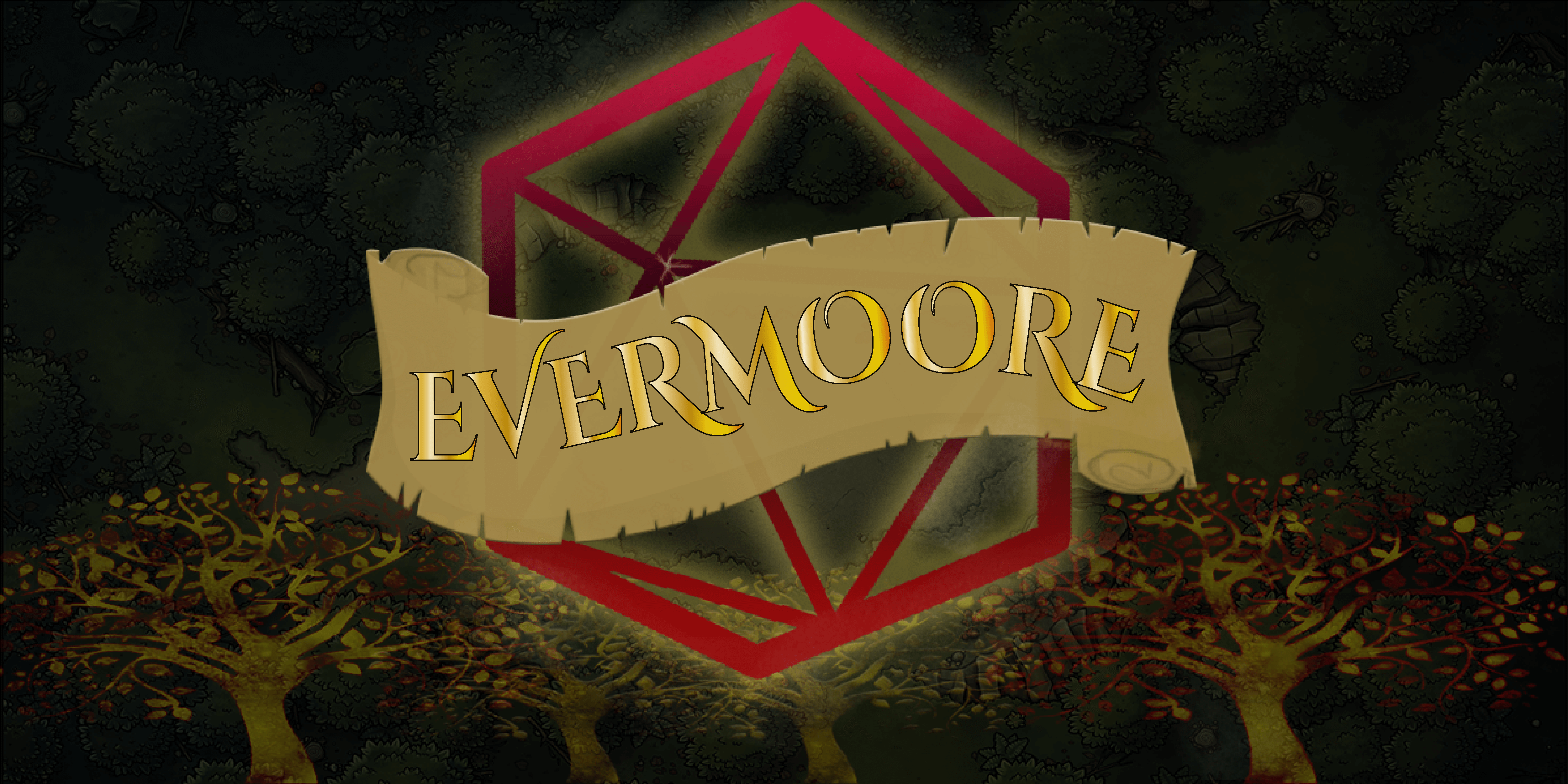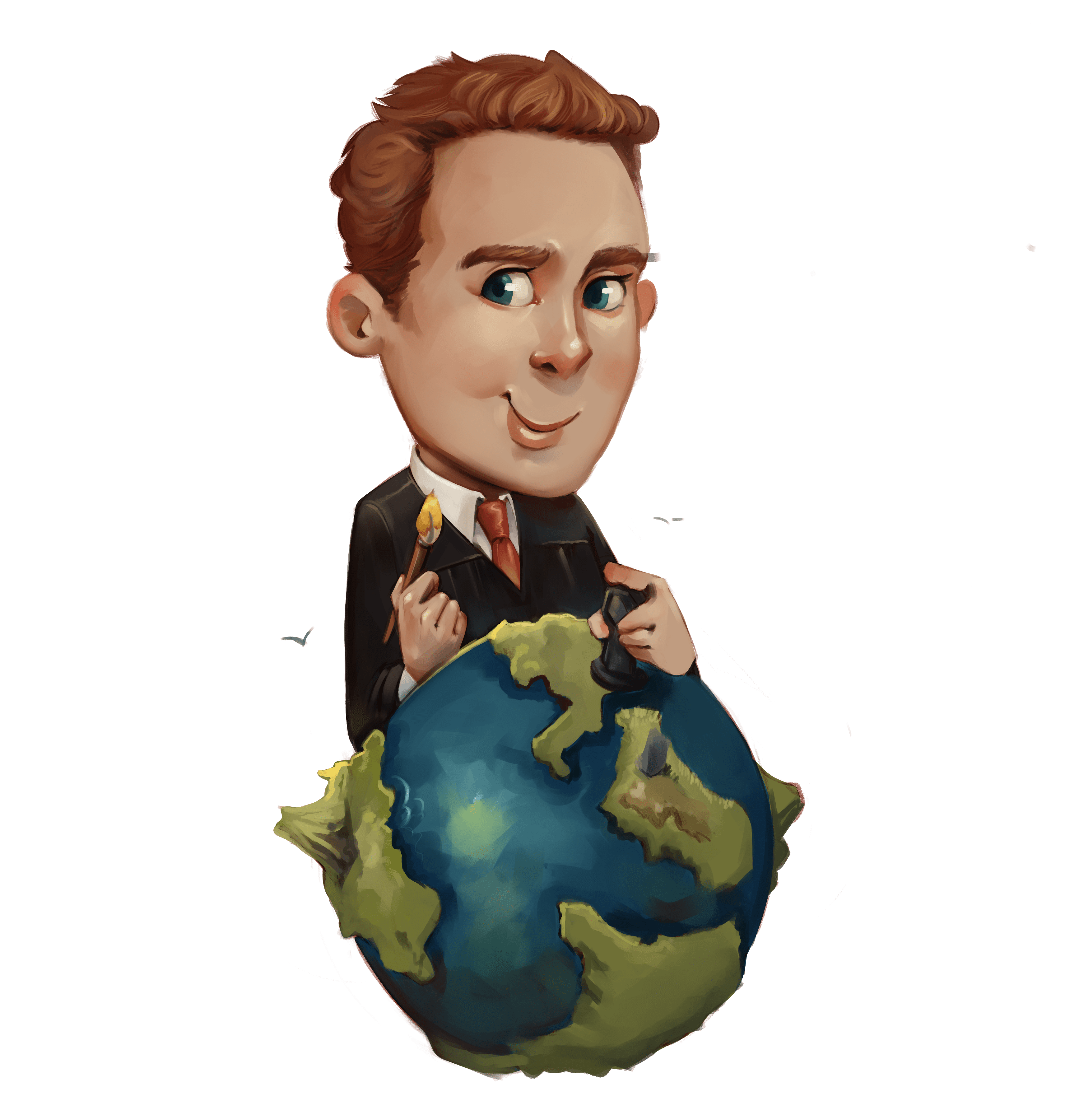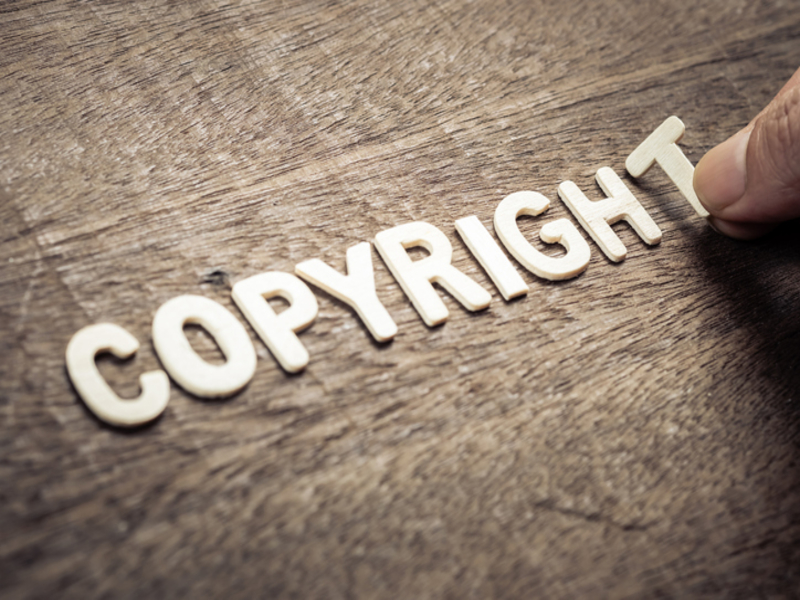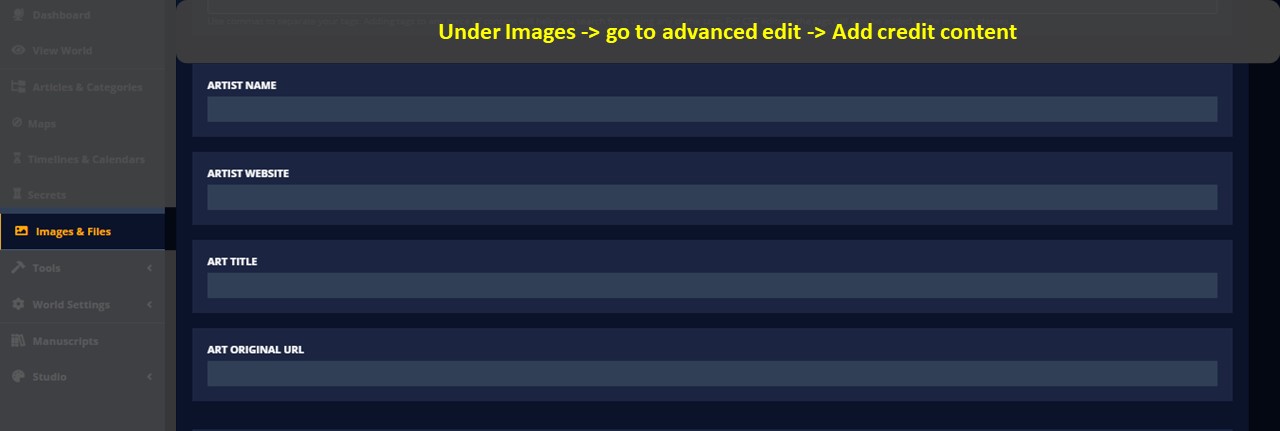World Building Copyright
What are we responsible for ? & What should we look out for?
Disclaimer:
The contents of these articles have been based on the Copyright, Design and Patents Act 1988 (CDPA) and enhanced through case law in the UK and from the Court of Justice of the European Union (CJEU) are for general information purposes only. Whilst endeavours have been taken to ensure that the information given below is correct, no warranty, express or implied, is given as to its accuracy and were using this information, it should be coupled with your own due diligence and seek specialist legal advice as required furthermore no liability is accepted for error or omission.
The author or publisher shall not be liable for any damage or loss (including but not exclusive to, without limitation, damage for loss of business or loss of profits) arising in contract, tort or otherwise from the use of the material, or inability to use, this site or any material contained in it, or from any action or decision taken as a result of using this site or any such material hereby listed.
Introduction
This article has been created leveraging expertise of over ten years with senior management experience, specialising in Data and Technology (Law, practice etc). Using case law, statute and legal resources to help support the community of talented creative minds, which is World Anvil users. The birth of this article started after witnessing a challenge in understanding the responsibilities applicable to world-builders and authors using World Anvil. After supporting the founders directly with other legal matters and after a private meal and a chat with the inner-sanctum on our regular catch-up's, the article was born. The article is designed to help share a greater understanding of the responsibilities of authors and world builders and try and bring clarity to the complex and moving landscape of copyright / Intellectual property.
How to read this article content
The article is written in a linear way thusly you are encouraged to read through the article top to bottom. However you can jump to the corresponding question as you see fit.Copyright Introduction
Copyright is a vast and complex area that can cause even the most experienced writers and authors to scratch their heads!. This article will look to provide, for general purposes, information to help you answer the following questions and understand your responsibilities when writing content on World Anvil, especially when public; What is copyright? Why is it important? What as a worldbuilder should I look for? What is covered under copyright? Along with busting some myths which plague the industry.Why should I, as world builder, care?
As per the World Anvil terms of service agreed to on creation of all accounts, World Anvil accept no liability for information shared and undertakes its duties to ensure were possible the prevention of copyright and acts as per best practise to support any infraction as per their duties/requirements. However, the publisher of the content, i.e. us, the world builders and authors, are accountable for the information we/you post and are responsible for adherence to our responsibilities and legal obligations. Therefore if infringements take place with the material you posted, and the copyright owner decides to undertake litigation action this would be versus you.What is Copyright?
Section 1: Copyright, Design and Patents act 1988: Copyright is a property right that subsists in original literary, dramatic, musical and artistic works as well as sound recordings, film, broadcasts and typographical arrangements of published editions.What area of law is copyright in?
Copyright law forms part of a broader topic known as intellectual property law which covers a wide diverse range of rights, some of which have little in common with others. However, although some rights may be quite different from others, several rights may exist in respect of the same matter. Intellectual property includes trademarks, design law, Patents & Copyright law.What do we mean by original?
Original as referred to above relates to the principle of originality which must be met for any work to be copyrightable. This is a low but minimum standard. A work, i.e. the thing you have produced, is original for copyright purposes if: it has originated from the author(Creator etc.)who has exercised skill, labour, effort and judgement and has not been copied from other works (meaning you can't copy someone else work and then claim copyright over it) unlike when you the requirements for obtaining a patent, there is no demand that novelty or innovation is met. Thusly for the copyright to exist, the work must be original.- For reference, this comes from the English case of University London Press and Ladbroke, or CJEU Infopaq A/S V Danske Dagblades Forening. The threshold of original can apply to modification of work already existing, technically. Such as the case between Tyco & Lego; however, the modifications must be significant and visual to constitute the threshold of the original meaning of new work. Otherwise, we'd all be merely making minor changes to extend the life of copyright indefinitely.What do we mean by tangible?
Tangible refers to the principle of tangibility, meaning a permanent expression of your literary, dramatic or musical work. Copyright does not apply to an idea but to the form, i.e., if you play a song on a guitar only if it is recorded, is it copyrightable.What is covered under CDPA for Literary work?
Section (1) of the Copyright, Design and Patents Act 1988 defines a literary work as any work, other than dramatic or musical work, which is written, spoken, snug, and includes a table or compilation (other than a database), a computer program, preparatory design for a computer program. 'Literary work' covers work a specific act of expression in print or writing, irrespective of its quality. Selections, arrangments, raw research material and compilations of literary works are protected, but only if they are in a tangible form, recorded. There is no protection for the compilations of drawings as a literary work.What is meant by the author?
Author refers to the principle of authorship, the author is the producers of the original, tangible work, where it is a compilation of materials. The author is the person or person's who gathered or organised the material and had put in the effort, skills and labour into the creation/expression of work. There must be that essential creative input, a 'direct responsibility for what actually appears on the paper'. For example, a secretary taking dictations, although responsible for fixation, is not the author of the work. For reference, refer to section 9 of the Copyright Designs and Patents Act 1988 - The author is the person who created the work. For a sound recording, the author is taken to be the producer; for a film, it is the producer and principal director; for a broadcast, it is the person making the broadcast; for a typographical arrangement, it is the publisher. For a computer-generated literary, dramatic musical or artistic work, it is the person who made the arrangements necessary for its creation. Work will be held to be of unknown authorship if it is not possible to identify the author (or any of them in the case of a work of joint authorship) after making reasonable enquiries.Can you have more than one owner of the copyright?
Yes! where two people/person's or more have collaborated to create an original, tangible expression of work (remember an idea is not copyrightable), and where it is impossible to identify a sole owner, joint authorship takes places. However, when joint authorship takes place, there does not need to have been an intention to create work of joint ownership for it to take place, nor does there need to be equal contributions, but each author must have made a significant contribution in terms of the right sort of creative skills and judgement. Merely editing, contributing suggestions, ideas, and information will not give rise to a finding of joint authorship. But they must have intended to create work. Joint authorship can arise as a result of reworking an existing work by a person if their input can be regarded as an original contribution to the work. As per section 10 of the Copyright Designs and Patents Act 1988, work is of joint authorship if produced by the collaboration of two or more authors, and the contributions of each is not distinct from that of the others.What in summary are the rights do I have as an Author? & What should I in relations to others rights when using others material
As an author, you have a number of rights, economic & moral, which each have remedies;- Right to be identified as the author or director of work' Paternity right.'
- Right to object to derogatory treatment of the work (integrity right)
- Right to Privacy in photographs and films
- Artists' resale right
- False Attribution of work
What are the full economic and moral rights which are held by the copyright owner & Can be given as part of a license agreement?
Economic Rights
Economic rights give you the opportunity to make commercial gain from the exploitation of your works. This would usually be by licensing others to use the work or by selling the rights. The author of a copyrighted work has the exclusive right to authorise or prohibit the following acts: Reproduction This covers copying a work in any way. For example, photocopying, reproducing a printed page by handwriting, typing or scanning into a computer, or taping recorded music. Distribution This covers issuing copies of a work to the public. This would include, for example, a book being sold in a bookshop. This right only applies the first time a copy of work enters into commercial circulation and so would not prevent the resale of that copy, for example, by a second-hand shop. Rental and lending This covers renting or lending copies of a work to the public. For example, renting from a video store or loaning a CD from a library. Public performance This covers performing, showing or playing a work in public. This would include performing a play in a theatre, and playing sound recordings or showing films in public. This right does not extend to the exhibition of literary, dramatic, artistic or musical works (for example, in a museum or gallery). Communication to the public This covers the communication of a work to the public by electronic transmission. This would include broadcasting a work or putting it on the internet. Adaptation This covers the making of an adaptation of a work. This would include making a film out of a novel, transcribing a musical work, translating a work into a different language or converting a computer program into a different computer language or code.Moral Rights
Works often mean more than just the economic value they can generate from their exploitation; they can be very special to the person who creates them as they have invested a lot in work, emotionally and/or intellectually. As a result, copyright works need to be protected in ways that are different to traditional forms of property. Moral rights protect those non-economic interests. Moral rights are only available for literary, dramatic, musical and artistic works and film, as well as some performances. Unlike economic rights, moral rights cannot be sold or otherwise transferred. However, the rights holder can choose to waive these rights. There are four moral rights recognised in the UK: The right to attribution This is the right to be recognised as the author of a work. This right needs to be asserted before it applies. For example, in a contract with a publisher, an author may state that they assert their right to be identified as the author of their work. The right to object to derogatory treatment of a work Derogatory treatment is defined as any addition, deletion, alteration to or adaptation of a work that amounts to a distortion or mutilation of the work or is otherwise prejudicial to the honour or reputation of the author. The right to object to false attribution This is the right not to be named as the author of a work you did not create. This would prevent, for example, a well-known author being named as the author of a story they did not write. The right to privacy of certain photographs and films This right enables someone who has commissioned a photograph or film for private and domestic purposes to prevent it from being made available or exhibited to the public. For example, this would allow you to prevent a photographer from putting your wedding photographs on their website without your permission.Remedies for infringement of copyright
The remedies, i.e. the fixes open to a copyright owner/s where an infringement has taken place directly or indirectly, include injunctions, damages, or an account of profits, delivery up and destruction orders. A maximum of 10 years imprisonment is available for criminal offences. An injunction will rarely be granted if the defendant has an arguable defence of fair dealing; this is to protect free speech. As per the pre-protocols, you are required before legal action to take reasonable steps to remediate the matter before turning to the courts fr resolution, such as simply asking the person to take down the infringement. However, as the copyright owner, you do have to prove your authorship and ownership of the copyright, and it is reasonable for an alleged infringer to ask for this. Also just because you feel it's an infringement doesn't mean it is, as there are numerous permitted acts that give a person a right to use copyrighted material such as the well-known defence of fair use know as fair dealing.Permitted acts - Fair usage & fair dealing
In law, the reason for the permitted acts, which are a defence to copyright infringement, not permission, is to provide a fair balance between the rights of the copyright owner and the rights of society at large. The permitted acts cover such things as education, libraries, and archives. Fair dealing' is a legal term used to establish whether a use of copyright material is lawful or whether it infringes copyright. Fair dealing set out in section 28A,29,30 and 30A of the Copyright Designs and Patents Act 1988 covers non-commercial research or private study, criticism, review and reporting of current events. If the part taken is not substantial, then there is no infringement of copyright and no need to reply on the permitted activities such as fair usage / fair dealing.Steps you could take to comply with the authors right to be identified as the author or director of work 'Paternity right.'
- Take images from reliable sources.
- Undertake reasonable actions to identify the owner, such as reverse image search or looking on the page you got the image from to credit the correct author.
- When you take a picture and save it to your computer, note the location, web address, date and time you took the photo
- When uploading photos to world Anvil, add artist name and original art link (see image to the right)
Length of time Copyright applies.
Copyright applies as a general rule for the lifetime of the author plus 70 years after their death. Currently, EEA works are given the same copyright duration in the UK as the UK works. For works from outside the EEA, copyright lasts for the term granted in the country-of-origin or the term granted to UK works, whichever is less.How to license your work?
As a copyright owner / artist , it is for you to decide whether and how to license the use of your work. A licence is a contractual agreement between the copyright owner and user which sets out what the user can do with work. Any licence agreed can relate to one or more of the rights granted by copyright and can also be limited in time or any other way. An exclusive licence could be granted, but remember that this enables the licensee to use the copyrighted work in the manner specified by the licence to the exclusion of all others, including the copyright owner. You may prefer to allow limited access to your work without charge using a Creative Commons Licence.Myth 1: 10%,20% rule of using material
Some believe that as long as you only use 10% or 20% of someone else's material/work, you are not breaching copyright. This is FALSE! When a material is copyrighted, the entire material/work is held under copyright, and just because you only took 10% or 20% of the material would not be a valid defence. For example, An author has written a book revealing a secret about someone, if this is the core/essence of the work revealing the secret, which might only be a sentence, i.e. less or more than 1% of the material, but you can still be breaching copyright and be liable for litigation actions.Myth 2: Anyone can bring a claim for copyright infringement
Only the owner or their exclusive licensee can bring proceedings in the courts against an infringement. Thusly if you receive action from someone acting on the behaviour of someone else, you have every right to request a copy of their authorisation for representation.Myth 3: DMCA and the UK
The Digital Millennium Copyright Act (DMCA) is a 1998 United States copyright law that implements two 1996 treaties of the World Intellectual Property Organization (WIPO). The European Union has given no adequacy in relations to DMCA as such, it has no recourse in UK / EU law. although used in industry as a way to report an infringement with the UK and many other countries, the DMCA process, which World Anvil have in place for all, is considered best practice and does not count as a legal remedy in the UK under the Copyright, Designs and Patents Act 1988.Myth 4: Under fair usage, I can use anything
Using fair usage/fair dealing is a permitted act, i.e. it is a defence to an alleged copyright infringement. Fair usage/fair dealing is not permission, meaning you will need to defend your usage. Thusly, using any permitted act, you can still be issued court papers when it is fair usage as it is a defence to the allegation of infringement. Thusly it would be best if you get permission to use any copyrighted material not replying to a permitted act like fair usage.FAQ
What might you need to evidence permission from a Copywrite owner?
When looking for evidence permission to use copyrighted material, the best thing to do is imagine you are sitting in front of a judge or someone who knows nothing about the matter in question. Would the document/evidence tell them everything they need to know? With permission, it should include (however, these are not hard and fast rules): What the material is, i.e. Image, photograph? Duration of usage (if limited)? Purpose of usage and what the copyright owner has allowed the material to be used for, i.e. commercial non-commercial? The source of the material and where it will be taken from? Name of who has provided permission? Name of the person/person's being given permission? When the copyright usage will start from and end if applicable. Below are the rules of evidence -Rules of Evidence: Evidence of whatever type must be both relevant and admissible. Evidence is relevant if it logically goes to proving or disproving some fact at issue in the prosecution. It is admissible if it relates to the facts in issue or to circumstances that make those facts probable or improbable and has been properly obtained.
Can I use tools like hero forge in my world?
Whenever using tools, always go ahead and check the site Terms and Conditions of Use and / or the Copyright policy. Most will tell you what purpose of usage they allow. For Hero Forge only allows their content to be used non-commercial use for more information check-out the policy.Resources out there to help.
Resources for readers:Law Express
UK Legislation.gov - Copyright, Designs and Patents Act 1988
The Digital Millennium Copyright Act (DMCA)
Goverment website on Copywrite chnages 2021
Free training from UK gov intellectual property office on IP





SMALL SPELLING ERRORS were should be where practise should be practice Why should I, as world builder, care? As per the World Anvil terms of service agreed to on creation of all accounts, World Anvil accept no liability for information shared and undertakes its duties to ensure were possible the prevention of copyright and acts as per best practise to support any infraction as per their duties/requirements